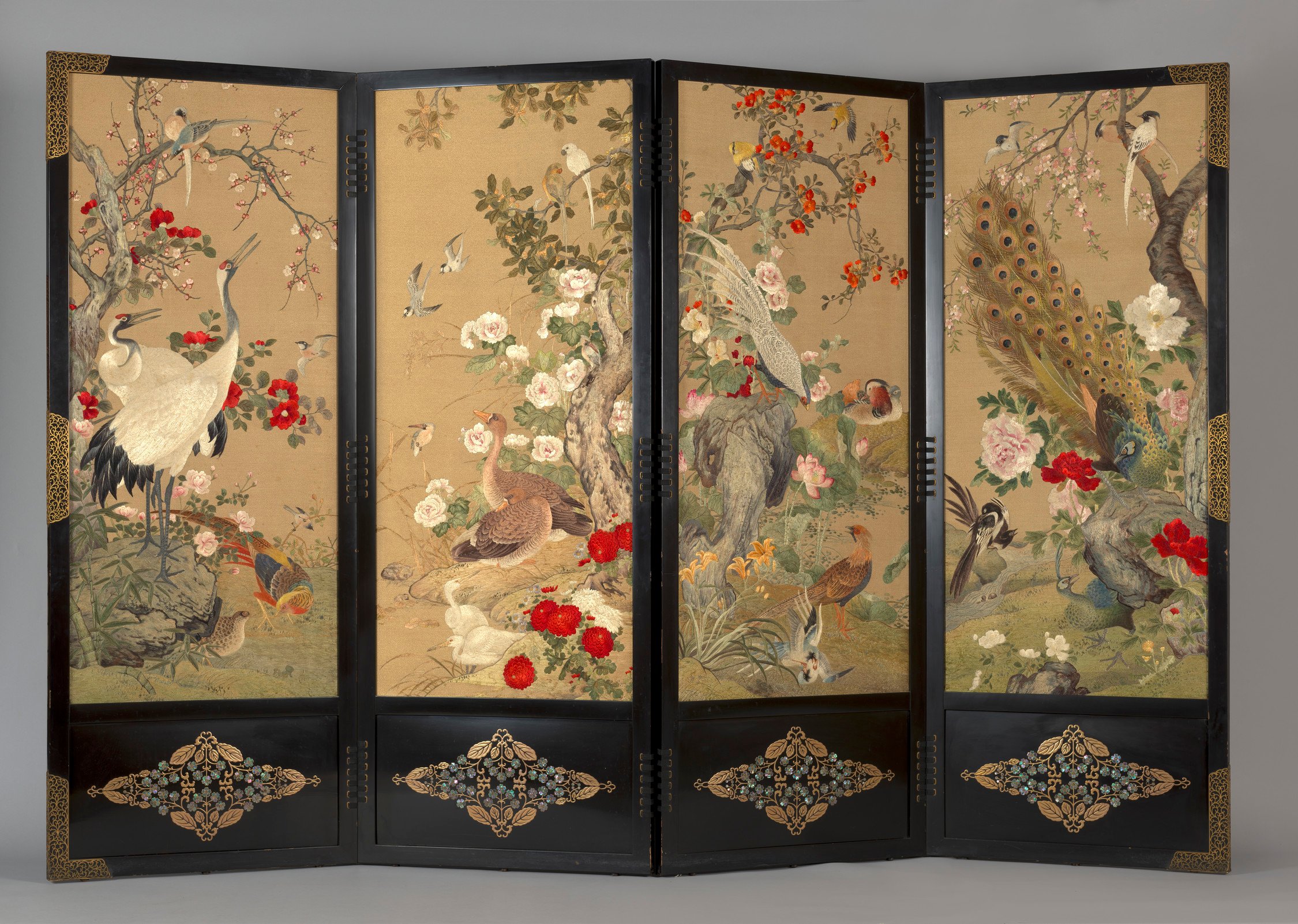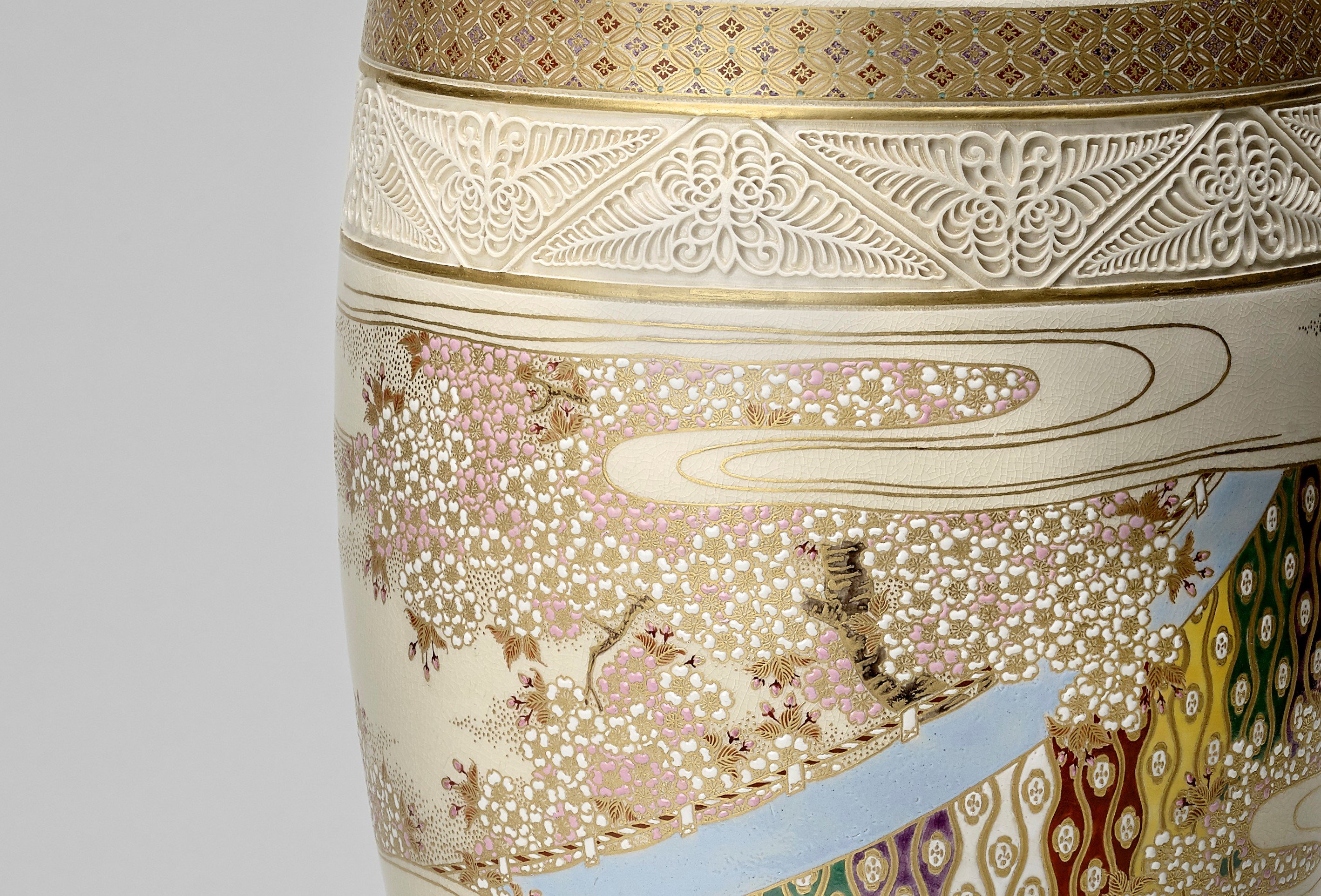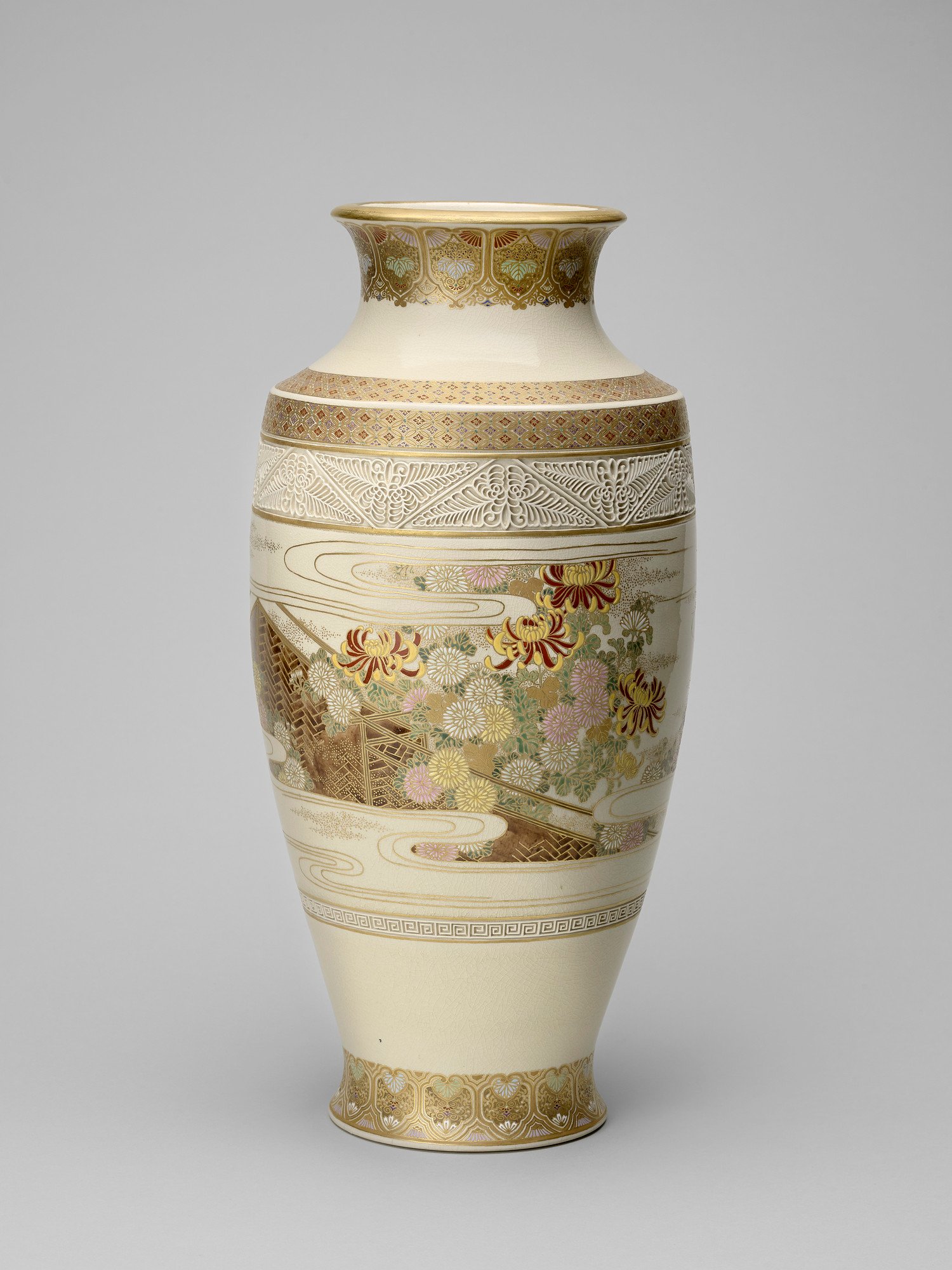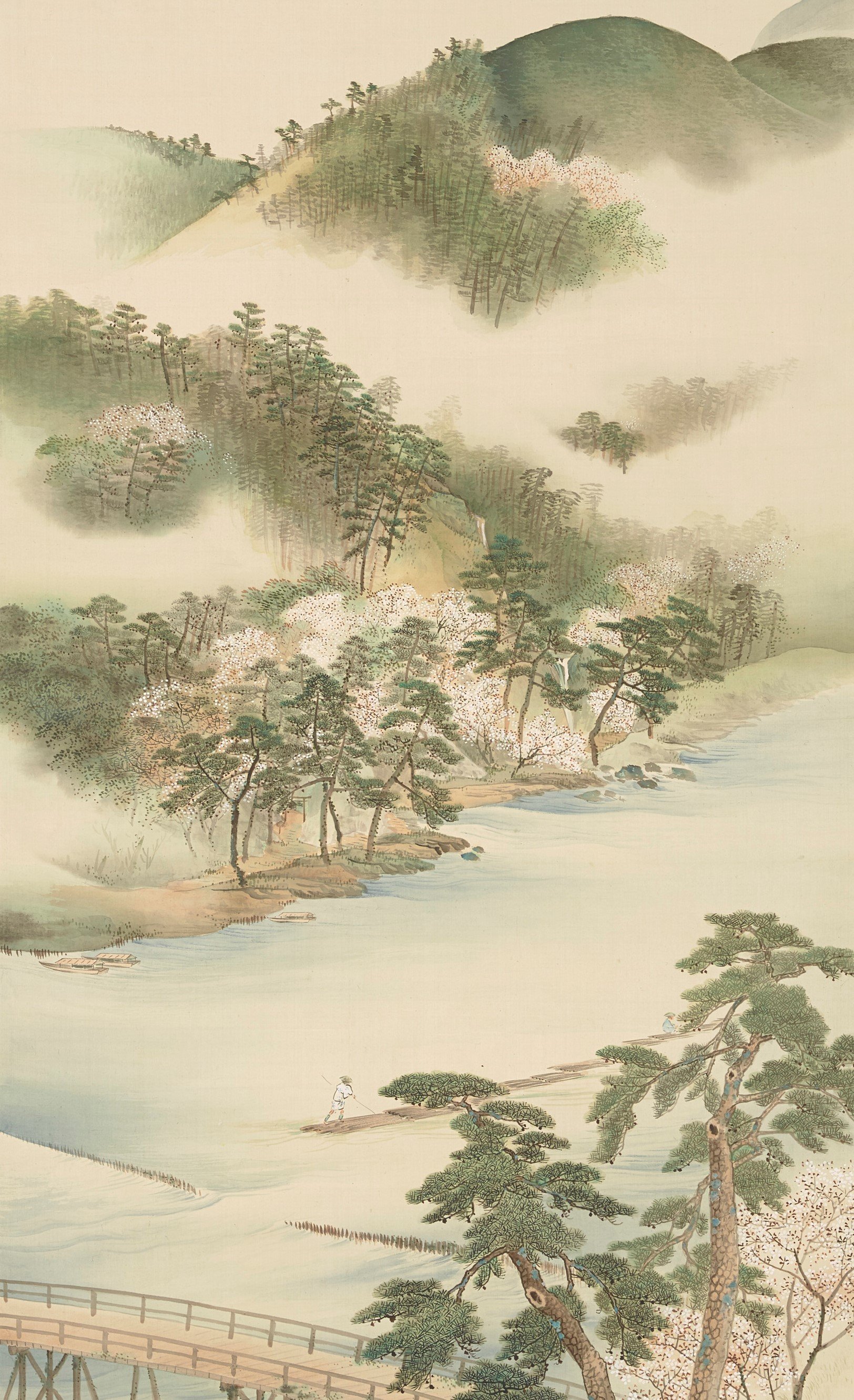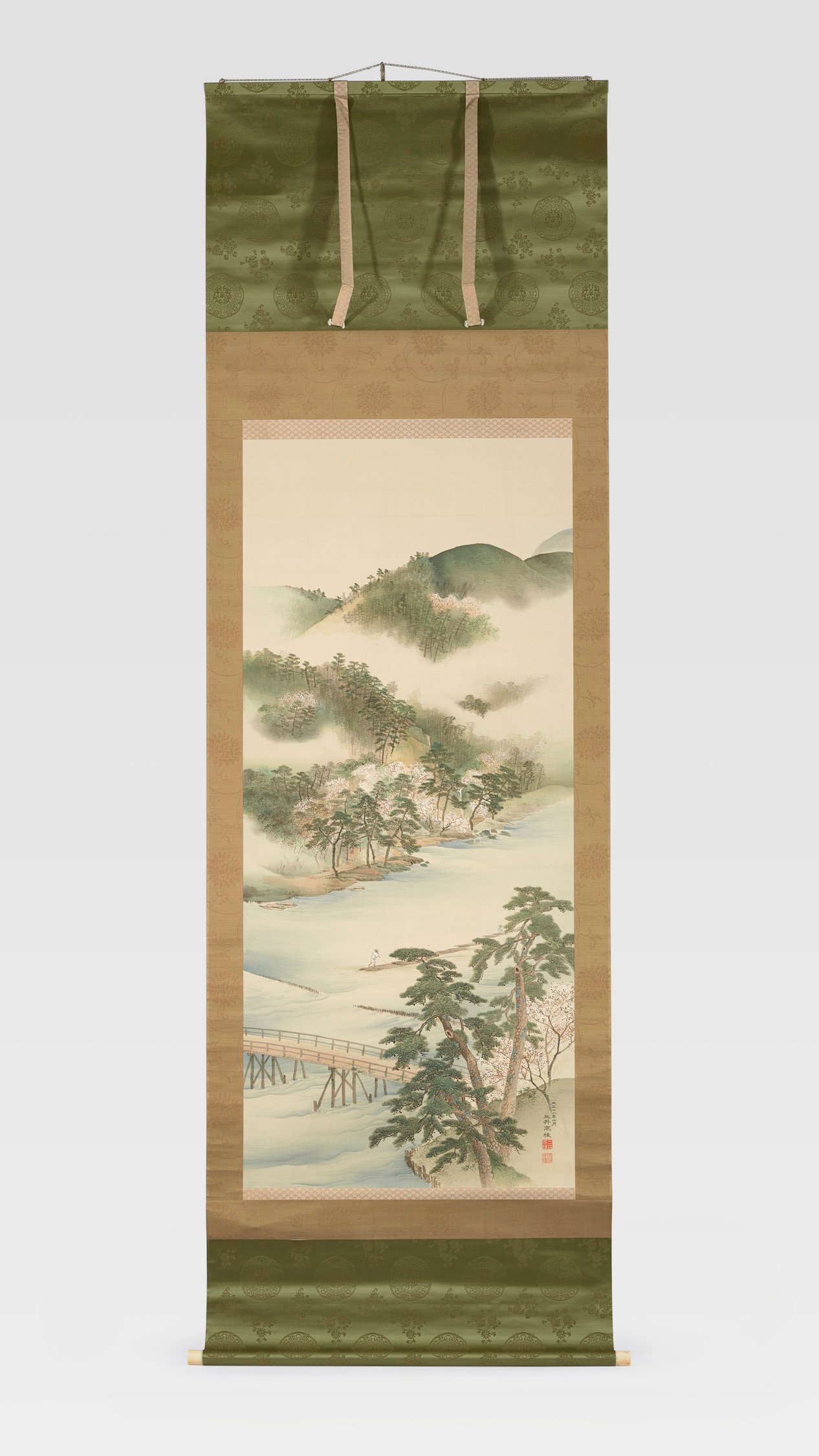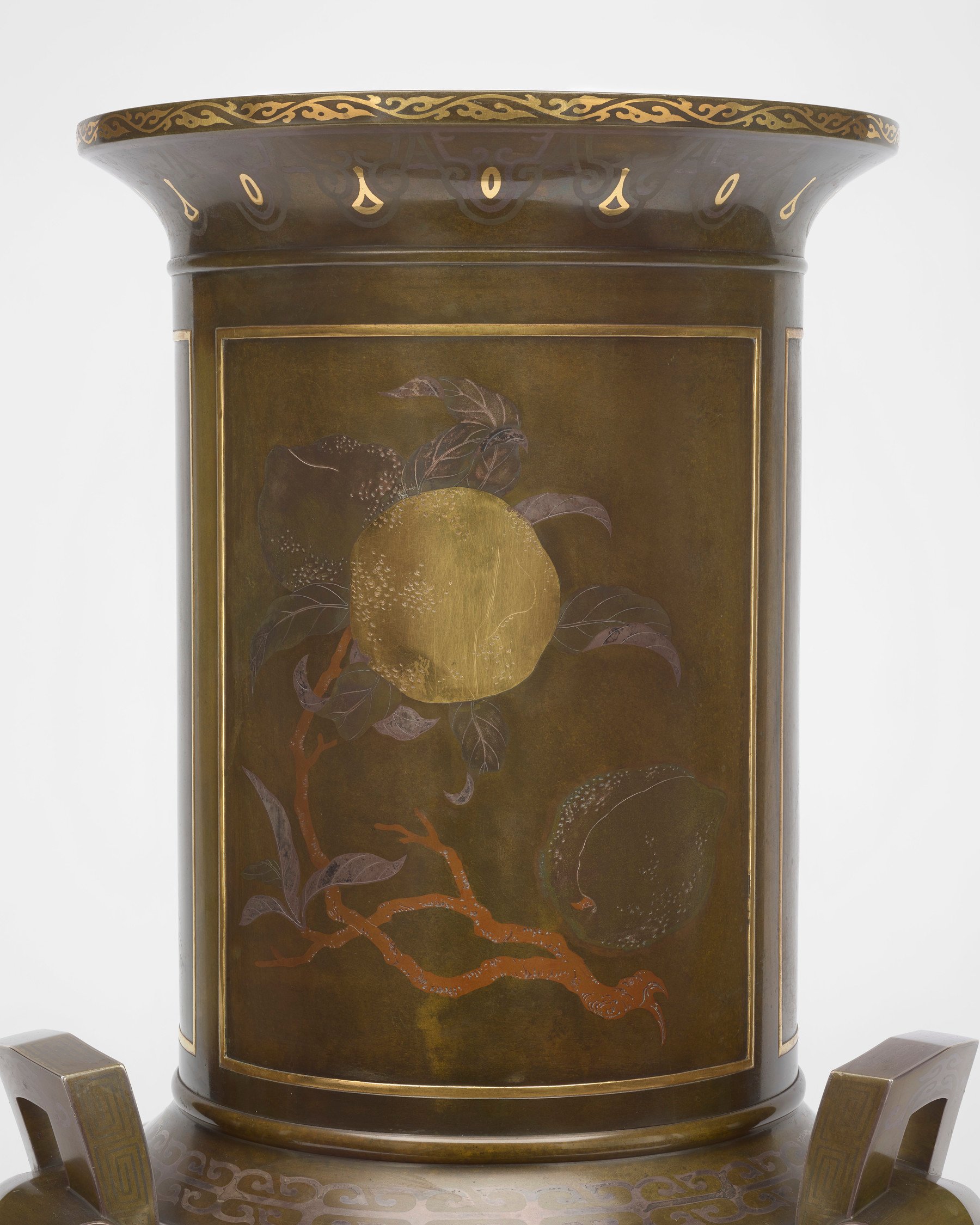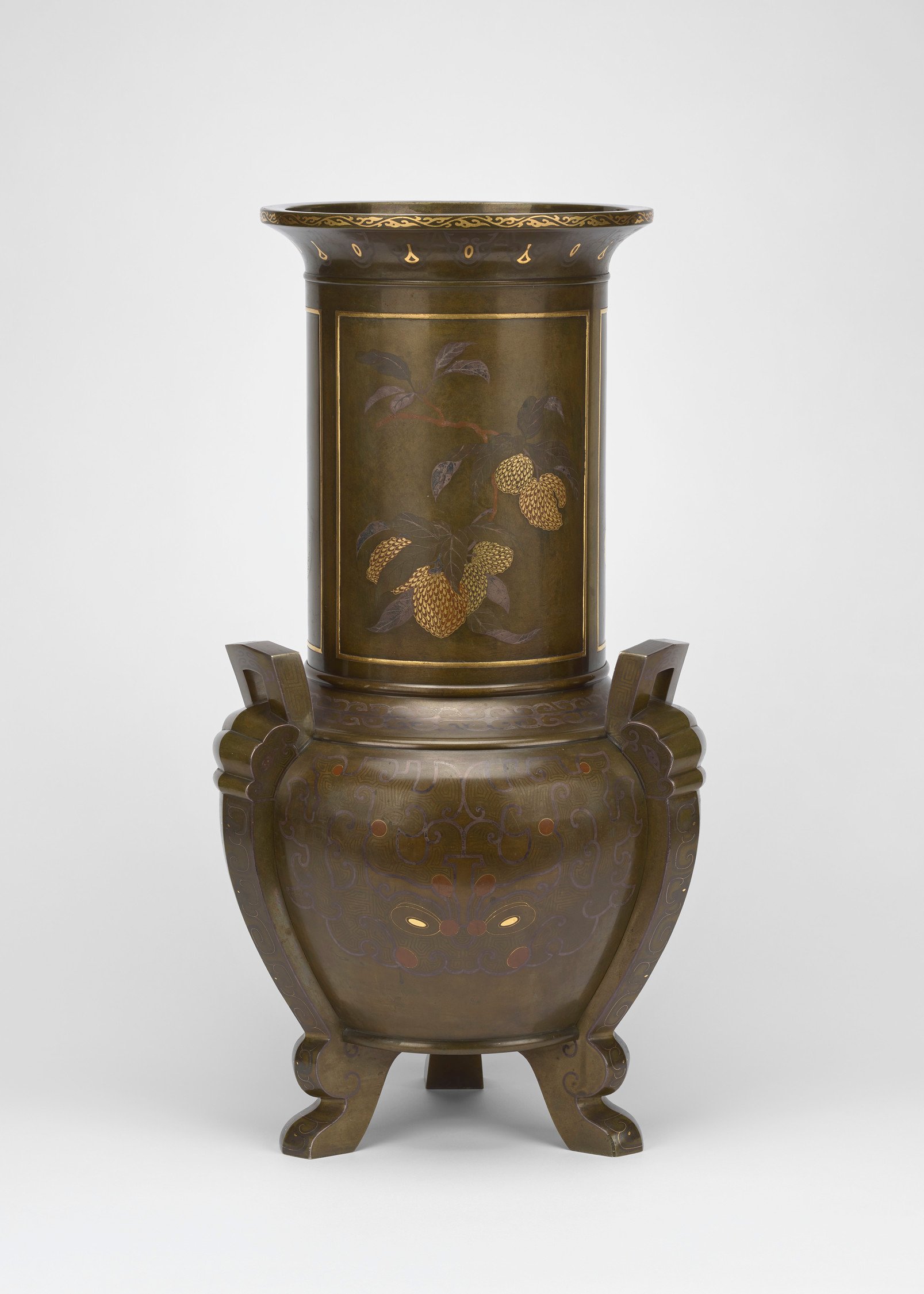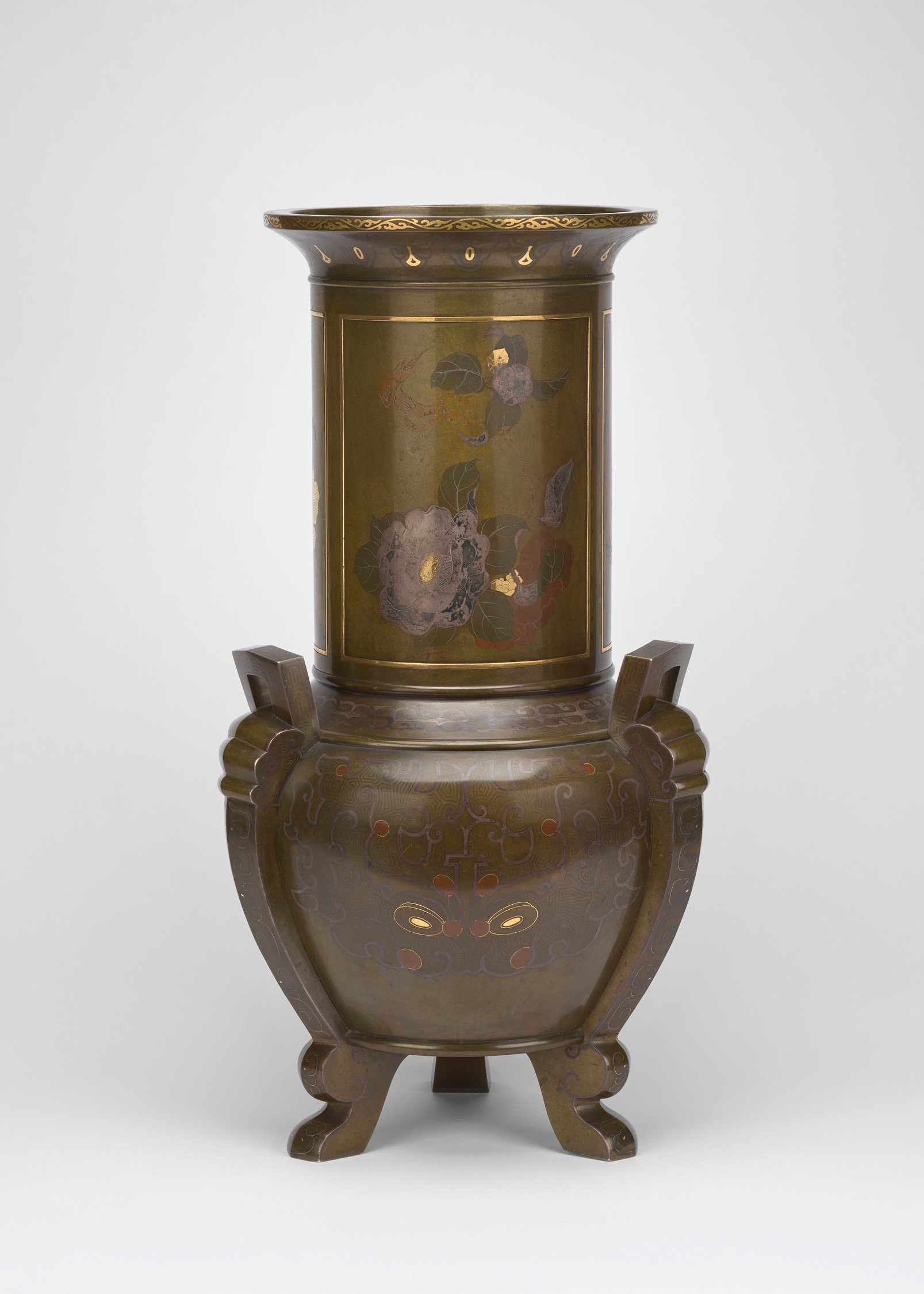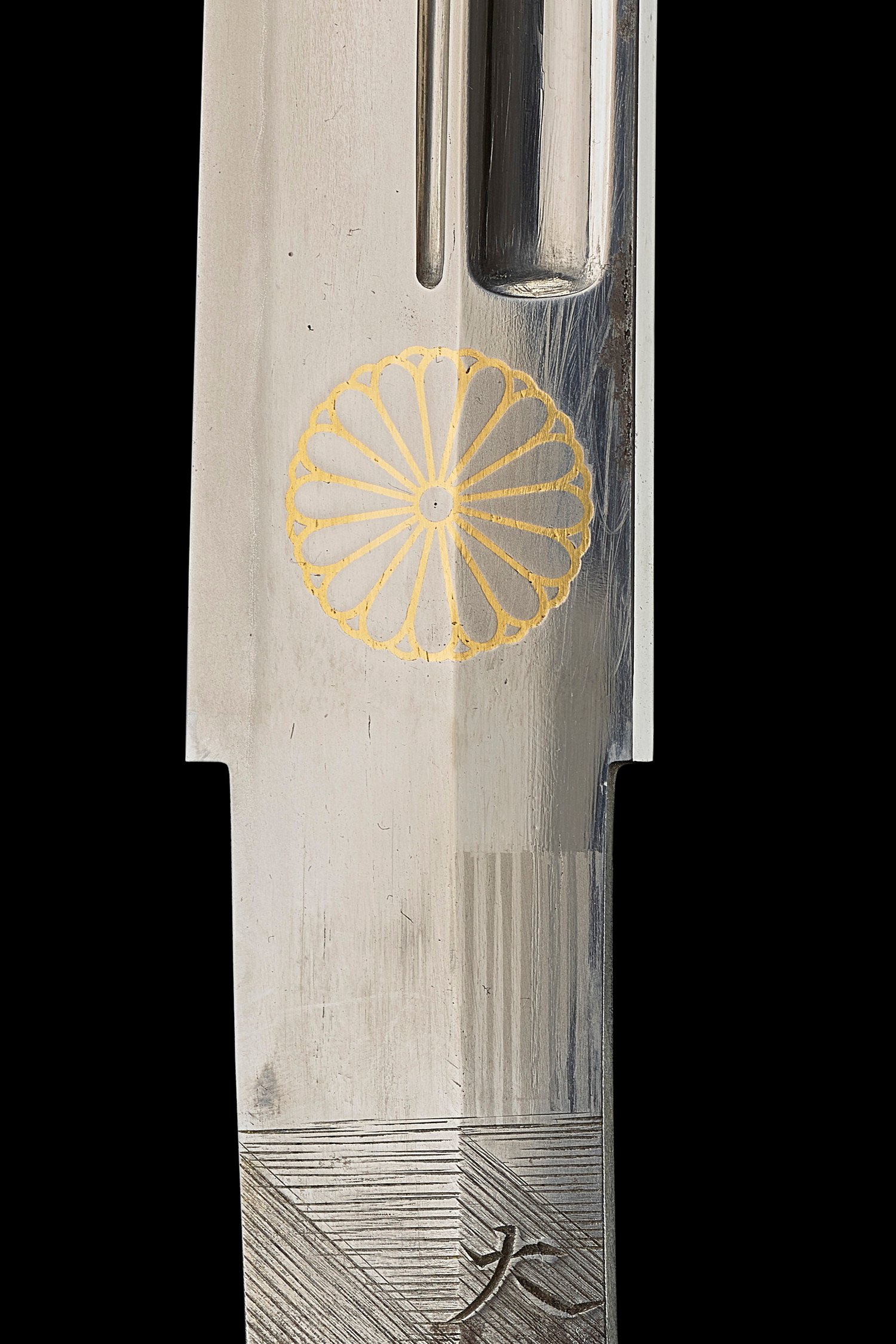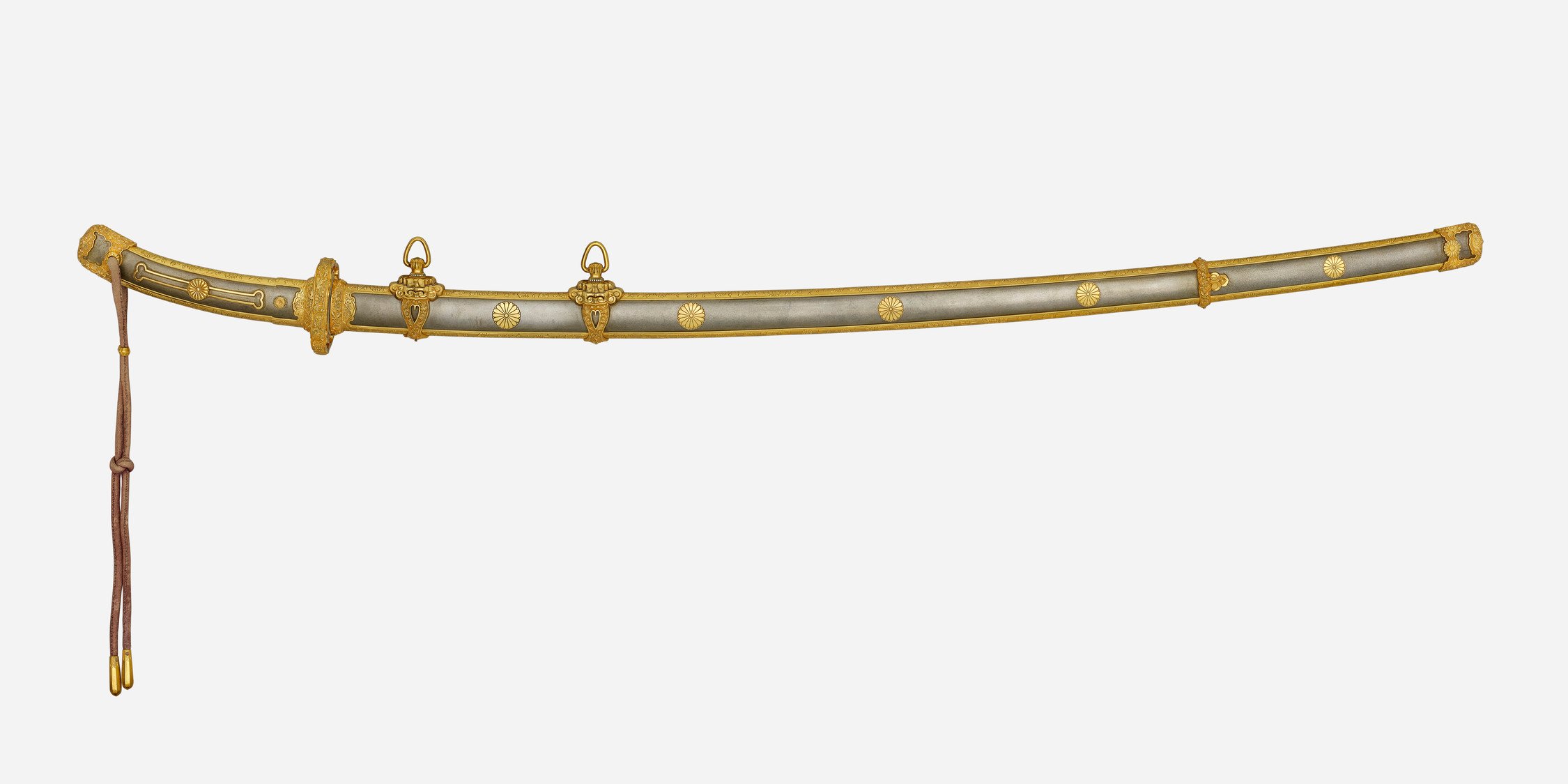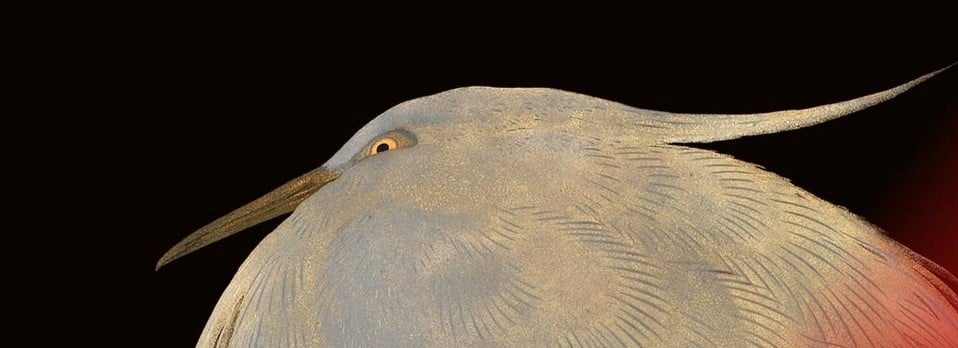
Nature in Japanese Art
Philosophy
The natural world has been a central theme of Japanese art and culture for millennia.
In Shintō, Japan’s ancient belief system, nature is venerated as the home of local spirits or kami who reside in plants, animals and landscapes. Seasonal rhythms such as the lunar New Year and harvest have long structured life around festivals and ritual offerings. When Buddhism became the official religion of the Imperial Court in the 8th century, ideas of impermanence and rebirth mingled ever more closely with this keen appreciation of the natural world.
The Changing Seasons
Many Japanese artists have explored these themes by depicting the changing seasons across a single object or landscape. This embroidered folding screen does exactly that. Each of the four panels represents a different time of year: the silvery crane, in shining flat silk, alludes to winter. A pheasant and peacock indicate spring, while peony and the bright kingfisher denote summer. Autumn is symbolised by chrysanthemums, which come into full bloom in this period. Taken together, the panels are a vibrant celebration of Japan’s flora and fauna, but they also sensitively evoke ideas of change and renewal. This theme of rebirth was an apt one for a Coronation gift to King Edward VII in 1902.
Impermanence
Among the most powerful symbols of impermanence in Japan is cherry blossom, which blooms dramatically each spring. In March or April, revellers gather outdoors to eat and drink beneath the flowering trees. The brief appearance of the blossoms and their sudden fading is a reminder of both the beauty and fragility of life. On this vase, the soft pink trees seem to dissolve into swirling clouds and the creamy glaze behind, indicating the fleeting nature of the season.
Seasonal Displays
A sense of transience is evoked in this hanging scroll painting, which shows blossoming cherry trees dotting the hills near Kyoto. The springtime freshness is reinforced by a bright mount of gold and green brocade, but the flowing water and clouds of mist remind us that time is passing. Seasonal paintings like these were once hung by wealthy samurai in dedicated alcoves called tokonoma, where they could be admired by guests. The changing displays also incorporated seasonal flower arrangements. Together, they invite the changing landscape into the architecture and rhythms of the home.
Realism
In the decorative arts, makers have perfected specific techniques to depict the natural world with delicacy and detail. These bronze vases are inlaid with an array of fruits and flowers. Each surface has been carefully varied to achieve a high degree of realism. The lemons are textured and stippled, while the persimmon fruits are highly polished. The lychee have meanwhile been created with a complex pattern of gold and copper alloys inlaid together. Some areas have also been also delicately patinated – or discoloured – to suggest natural decay. Japanese metalworkers would carefully apply ingredients such as daikon radish, sake or green tea to the surface of the metal, producing reactions which altered its hue. The result is a lifelike, engaging rendering.
Stylisation
Highly stylised plants and flowers have long been used in Japan on family crests or heraldic badges called mon. The symbols were designed to be instantly recognisable, and so they present the natural world in bold, simplified form. Emblems range from wisteria, hollyhock and plum blossom to geese, rabbits and mountains. Among the most famous is the 16-petalled chrysanthemum, which was adopted as the symbol of the Imperial Family at the turn of the 13th century. It represents purity and long life, because the flower blooms for an extended period. Diplomatic gifts from the Imperial Household, like this sword, often bear this crest, indicating the official nature of the commission.
The Centrality of Nature
Together these works provide a glimpse of the centrality of nature to Japanese art. Intertwining a philosophical worldview, close observation and the finest techniques, they show how the surrounding world has proven a rich source of inspiration for artists – as it continues to do so today.





